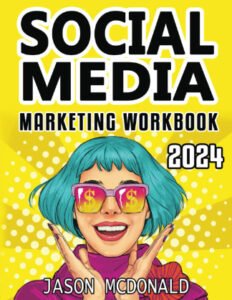Social Media
The Place Where It All Happens!

Effective Social Media Marketing
Identifying Your Target Audience
Identifying and understanding your target audience stands as a critical first step in any effective social media marketing strategy. Knowing who your audience is enables you to create relevant content that resonates, ensuring your marketing efforts are both efficient and impactful. Moreover, an in-depth understanding of your audience aids in optimizing ad spend, thus yielding better returns on investment. The process of defining your target audience can be approached from various angles, including demographic analysis, psychographic profiling, and leveraging specialized tools.
Demographic analysis focuses on factors such as age, gender, location, income level, and education. These parameters help segment the audience into manageable categories, thereby enabling tailored communication. For instance, a luxury fashion brand targeting high-income women in urban areas will adopt a different social media marketing strategy than a tech gadget company aimed at millennial men in suburban regions.
Psychographic profiling delves deeper, examining interests, values, personalities, and lifestyles. This method provides a fuller picture of what motivates your audience. For example, a fitness brand might target health enthusiasts by creating content that highlights exercise tips, nutritional advice, and success stories, engendering a sense of community among like-minded individuals.
Utilizing tools such as surveys, social media analytics, and competitor analysis further refines audience identification. Surveys and questionnaires can garner direct feedback from your existing or potential customers, offering insights that are otherwise difficult to obtain. Social media analytics provide tangible data on user engagement, enabling marketers to discern patterns and preferences. Competitor analysis involves examining rival pages or sites to understand their audience strategies and identifying gaps that your brand can capitalize on.
Different industries can tailor these methods to suit their specific needs. An e-commerce platform might focus heavily on social media analytics to track shopping behaviors, whereas a consulting firm could rely more on surveys to understand client needs. By meticulously identifying and understanding your target audience, your social media marketing efforts transcend guesswork and become a strategic endeavor poised for success.
Crafting Engaging Content
Crafting engaging content is pivotal for successful social media marketing. The essence of compelling content lies in its ability to captivate and sustain the audience's attention. Key elements include high-quality visuals, storytelling, and actionable language. High-quality visuals, such as well-shot photos and professionally designed graphics, immediately draw the viewer's eye and make content more shareable. In parallel, storytelling weaves these visuals into a narrative that resonates emotionally, transforming mundane posts into memorable experiences.
Actionable language further drives engagement by prompting users to take specific actions, whether it's clicking a link, sharing a post, or participating in a discussion. To ensure content reaches and engages the target audience, marketers must blend various content types. Videos are particularly effective on platforms like Instagram and Facebook due to their dynamic nature, while infographics are excellent for distilling complex information into easily digestible visuals. Blog posts offer in-depth insights, and memes provide a light-hearted, relatable touch.
Choosing the right type of content for your audience involves understanding their preferences and behaviors. Data analytics tools can aid in identifying which formats garner the most interaction. Complementing this is the necessity of maintaining a consistent brand voice across all communications. This consistency reinforces brand identity and builds trust with the audience.
Leveraging user-generated content (UGC) is another potent strategy. UGC not only provides authentic and relatable endorsements but also fosters community and loyalty. Encouraging customers to share their experiences can significantly amplify your content’s reach and credibility.
Establishing a content calendar can streamline the content creation process and ensure a balanced mix of posts. Ideal posting frequency varies by platform; for instance, Instagram thrives on daily updates, while LinkedIn can sustain with a couple of posts per week. Monitoring industry trends and using insights from successful content campaigns can offer guidance. Examples include Oreo’s ‘Daily Twist’ campaign, which used timely, creative visuals to maintain relevance, and Dove’s ‘Real Beauty’ campaign that leveraged storytelling to drive societal conversations.
Utilizing Social Media Tools and Analytics
Social media tools and analytics are indispensable assets for modern marketing strategies. Leveraging platforms like Hootsuite and Buffer can significantly streamline your social media management. These scheduling tools allow for efficient content planning and posting across various social networks, ensuring consistency and optimal timing. By automating routine tasks, you can focus more on crafting engaging content and interacting with your audience.
On the analytics front, tools such as Sprout Social and Google Analytics provide invaluable insights into your social media performance. With these tools, you can track key metrics like engagement rates, reach, conversions, and ROI (return on investment). Engagement rates help you understand how well your content resonates with your audience, while reach indicates the number of users who see your content. Conversions measure the effectiveness of your campaigns in driving desired actions, and ROI helps determine the financial return on your social media investments.
For instance, Sprout Social's analytics dashboard offers a comprehensive view of your social media data, allowing you to identify trends and make data-driven decisions. Google Analytics, on the other hand, can track traffic from your social media channels to your website, providing deeper insights into user behavior and conversion paths. By interpreting these metrics, you can refine your strategies to better align with your business goals.
Several brands have successfully utilized these tools to enhance their social media marketing. For example, Wendy's has effectively used Hootsuite to manage their witty and timely social media posts, leading to increased engagement and brand visibility. Similarly, Airbnb leverages Google Analytics to understand their audience's interactions and optimize their content strategy accordingly. These real-world examples illustrate the potential of social media tools and analytics in driving measurable marketing success.
Developing a Paid Social Media Strategy
Leveraging paid social media advertising can significantly enhance your marketing efforts by ensuring your content reaches a broader and more engaged audience. A paid social media strategy can offer myriad benefits, including increased visibility, precise targeting of potential customers, and improved conversion opportunities. By investing in paid ads, brands can effectively cut through the noise of organic content and connect with their target audience more efficiently.
Several types of social media ads can be integrated into your marketing strategy, each offering unique features tailored to different platforms. Facebook Ads, for instance, allow for detailed audience segmentation based on demographics, interests, and behavior. Instagram Stories Ads, on the other hand, leverage the appeal of visually engaging, ephemeral content, making it ideal for promoting limited-time offers or new product launches. LinkedIn Sponsored Content provides a professional context, making it particularly effective for B2B (business to business) campaigns, while Twitter Promoted Tweets (now X platform) allow for real-time interaction and brand visibility in trending conversations.
To get started, it's essential to set a clear budget and define your advertising objectives. Determine what you hope to achieve, whether it's brand awareness, lead generation, or driving sales. Crafting compelling ad copy and visuals is paramount. Your advertisements should capture attention quickly and convey your message succinctly. Incorporate high-quality graphics or videos, a strong call-to-action, and language that resonates with your audience.
Ad performance optimization should be an ongoing process. A/B testing is a useful method to determine what works best for your campaign. By creating multiple versions of your ads with slight variations in copy, visuals, or targeting criteria, you can analyze performance data and optimize your strategy based on actionable insights. Monitoring analytics is also crucial; platforms like Facebook and Instagram provide comprehensive metrics that can guide your optimizations, including click-through rates, conversion rates, and cost-per-click.
Case studies are invaluable for understanding successful paid social media campaigns. For example, a mid-sized retail brand might achieve significant sales increases by targeting lookalike audiences on Facebook, utilizing eye-catching carousel ads, and promoting season-specific offers. Another case might involve a tech company using LinkedIn Sponsored Content to generate high-quality B2B leads by sharing insightful industry reports and whitepapers.
Recommended Reading:
The book Social Media Marketing Workbook (2024 Edition) by Jason McDonald is a highly practical guide designed for small business owners, marketers, and entrepreneurs looking to navigate the complex world of social media marketing. McDonald, an experienced social media instructor at Stanford Continuing Studies, breaks down strategies for promoting businesses on major platforms like Facebook, LinkedIn, Instagram, YouTube, Twitter, and Pinterest.
The workbook stands out for its step-by-step approach, making it easy to follow even for beginners. It also offers access to free tools, including the companion "Marketing Almanac," which provides hundreds of free resources to assist with social media marketing efforts. McDonald emphasizes practical learning, and the workbook includes exercises to reinforce the concepts taught.
The 2024 edition is updated with the latest trends and features new chapters covering TikTok and marketing basics, ensuring that readers are equipped to handle current social media challenges. The workbook's tone is accessible and straightforward, making complex marketing concepts easier to digest for all levels of experience.
Overall, the Social Media Marketing Workbook is praised for being an actionable guide with real-world applications, helping businesses grow their online presence through effective social media strategies.
Disclaimer: As an Amazon Associate I will earn from qualifying purchases you made from this page.

